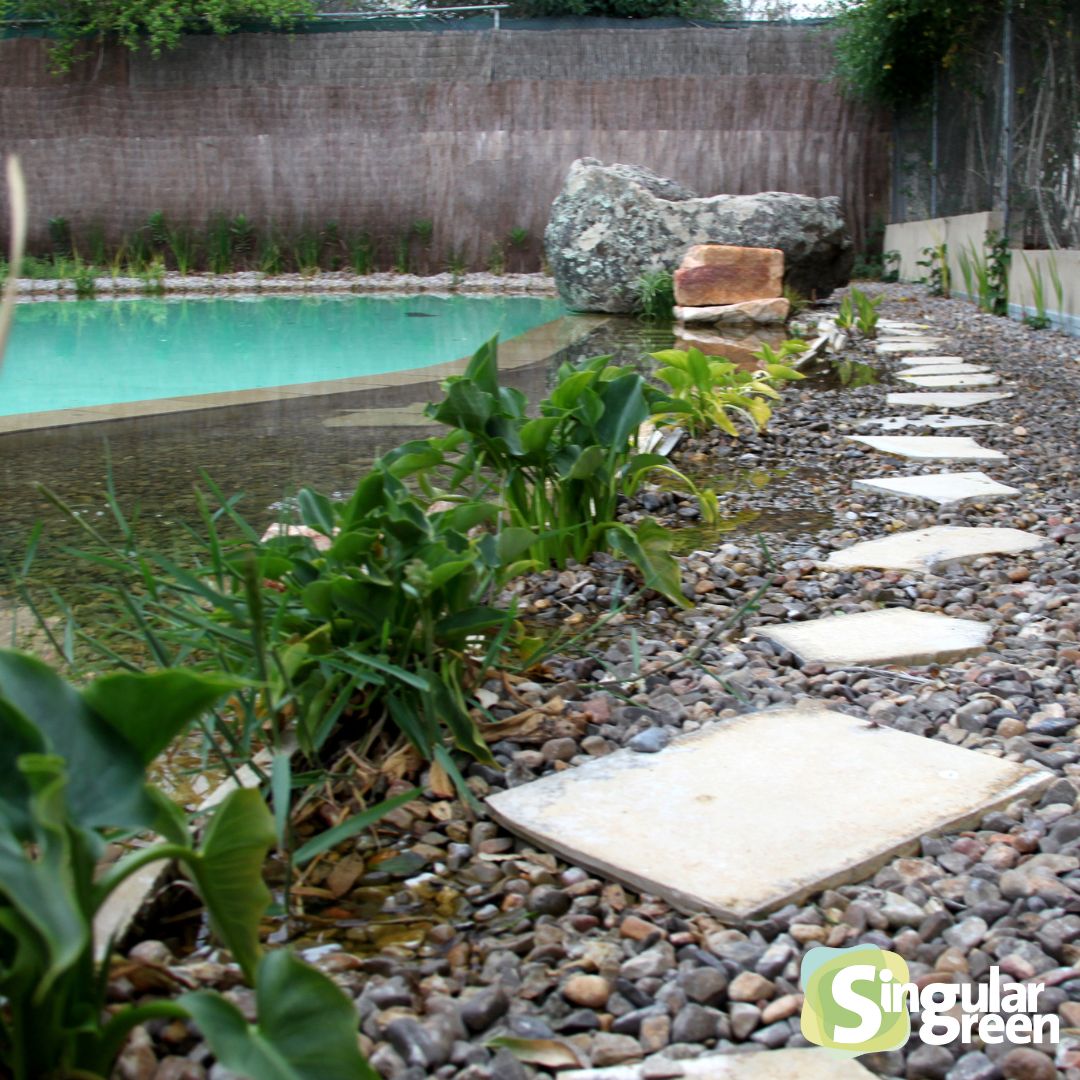Architecture and vegetation are concepts that go well together. Green architecture is a reality that can be found all over the world and in this article we want to show you 10 of the best known green buildings.
Cities are looking to become greener, and integrating nature into buildings is one more way to achieve this.
These buildings with vegetation on their facades not only improve the air, but also promote biodiversity and many other benefits that we have already told you about. In addition to all this, we will be able to turn cities into more pleasant and beautiful spaces.
1. Bosco Verticale, Milan, Italy
Designed by green building pioneer Stefano Boeri, this residential complex in Milan was one of the first buildings to include plants as part of its identity.
Surrounded by 800 trees, its 80-metre high façade and 112-metre perimeter, it has thousands of shrubs with approximately two thousand different species.
This green building has become a true icon of the city.
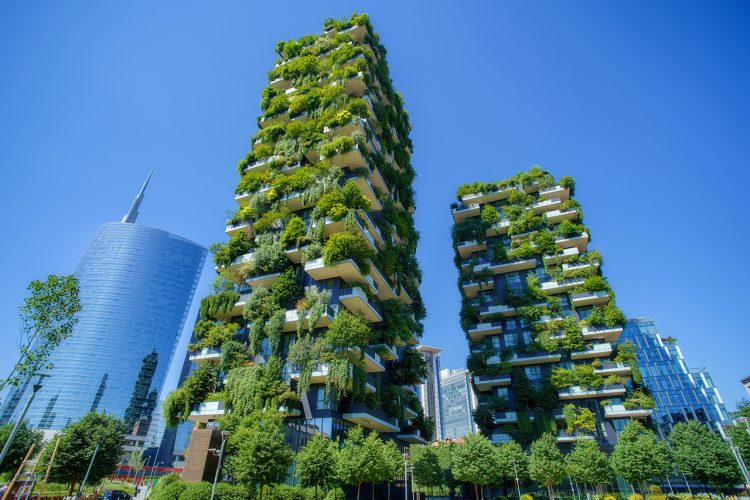
2. Vancouver Convention Centre, Canada
This spectacular multi-level roof has a total surface area of 6 hectares with more than 400,000 native plant specimens.
The building has won numerous environmental awards, mainly due to its insulating design which helps to control the building’s interior temperature and allows rainwater to be collected and used.
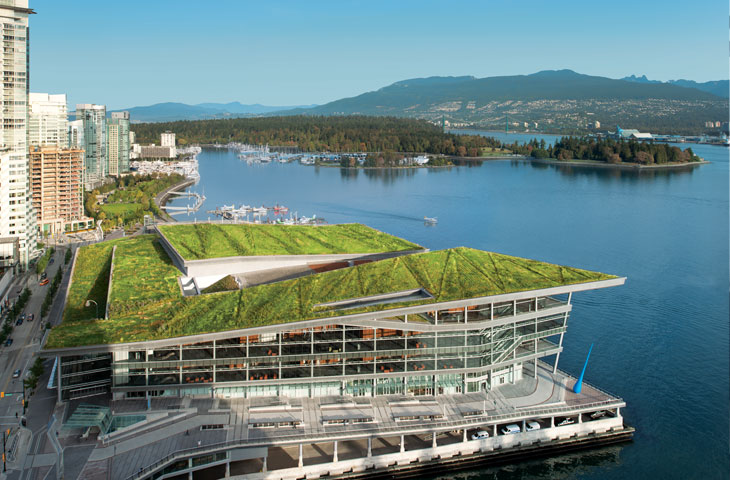
vancouverconventioncentre.com
3. One Central Park, Sydney, Australia
This imposing skyscraper, designed by Jean Nouvel and Patrick Blanc, is considered one of the largest vertical gardens on the planet.
Built in 2014, it is composed of two towers that intertwine with gardens and shrubs, transforming its appearance with the changing seasons.
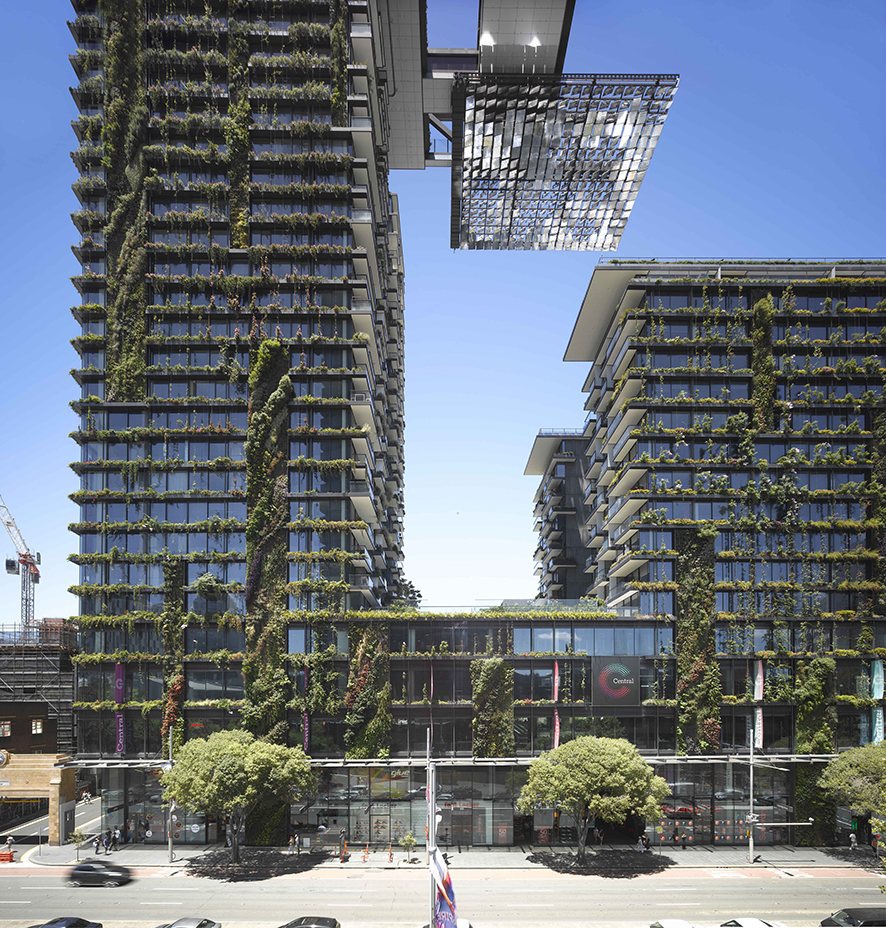
4. ACROS Fukuoka Prefectural International Hall, Fukuoka, Japan
With this design, architect Emilio Ambasz creates a symbiosis between the building and the park where it is located. The north side, located on the most prestigious street in Fukuoka’s business district, is characterised by its elegant urban façade, while the south side extends over the park through its terraced gardens that climb the full height of the building, culminating in a magnificent observation deck offering a breathtaking view of the city’s harbour. Its vegetation extends over an area of almost 100,000 square metres.
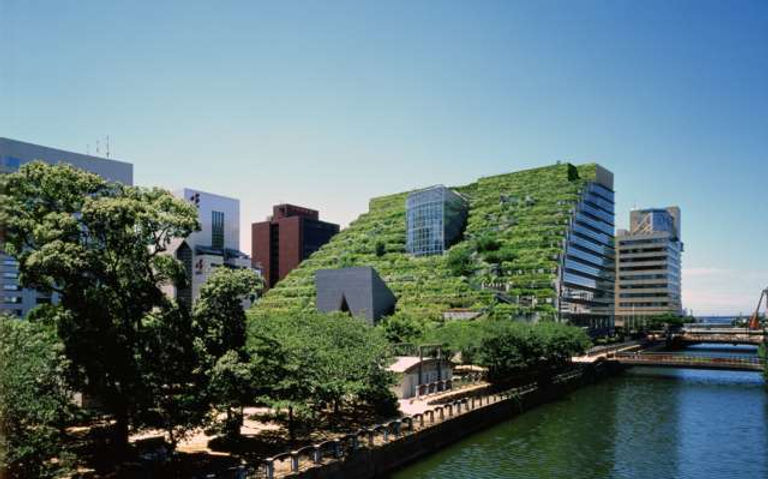
5. Parkroyal Pickering Hotel, Singapore
Whoa architects conceived this building as a ‘hotel in a garden’, incorporating lush greenery, including green walls, water fountains and 15,000 square metres of tiered sky gardens. It is considered one of the most iconic sustainable buildings in Asia.
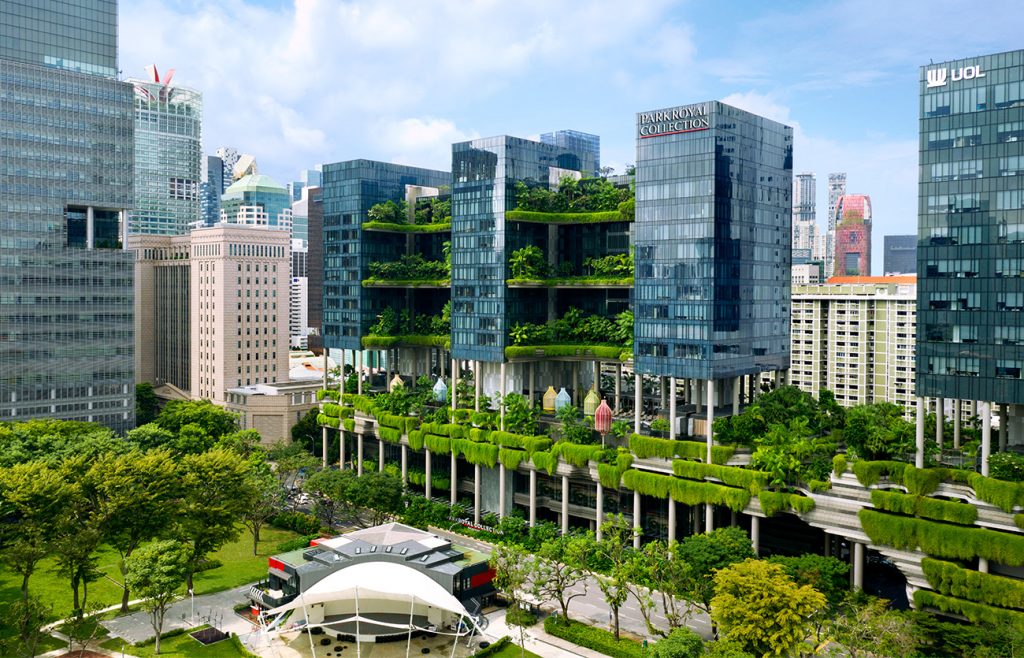
6. Kö-Bogen II, Düsseldorf, Germany
Designed by the German architectural firm Ingenhoven, it is considered the largest green building in Europe and one of the most important sustainable buildings in the world. The building is covered with more than 30,000 plants, a total of 8 km of hornbeam hedges.
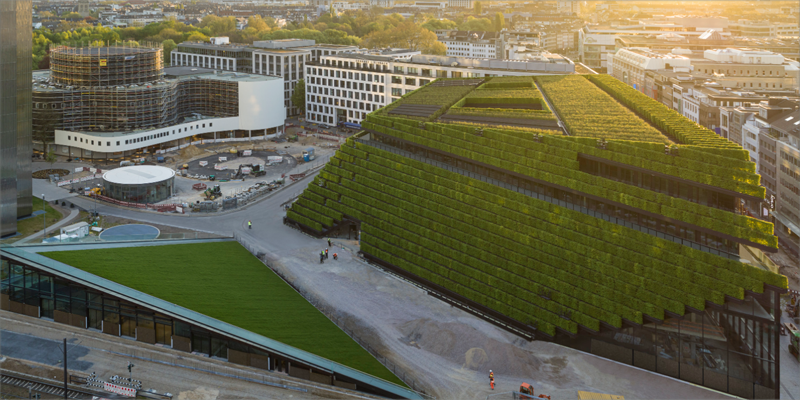
7. Lycée Marcel Sembat, Sotteville lès Rouen, France
The project, which consisted of the refurbishment and extension of the school, starts at the edge of the park and adapts naturally to the site through the undulating, low-rise design of its 12,764 m² green roof.

8. Quai Branly Museum, Paris, France
Jean Nouvel was inspired by different green buildings to design this museum located on the Quai Branly. His vertical garden of the Musée du quai Branly covers an area of 800 m², with 376 plant species from all over the world.

9. Design School in Nanyang, Singapore
This 5-storey building, developed by CPG Corporation, whose roof blends in with the surrounding nature, creates open spaces for students. You can take a stroll along its rooftop meadows, starting from one end and exiting at the opposite end, as if it were a green hill.

10. Vitoria-Gasteiz Conference Centre
With almost 1,500 m2 of plant surface, this vertical garden designed by SingularGreen has become the largest in Spain. More than 33,000 plants of different varieties native to the area of Alava and the Basque Country were used in it, being the first vertical garden that reproduces native ecosystems of the area where it is located.
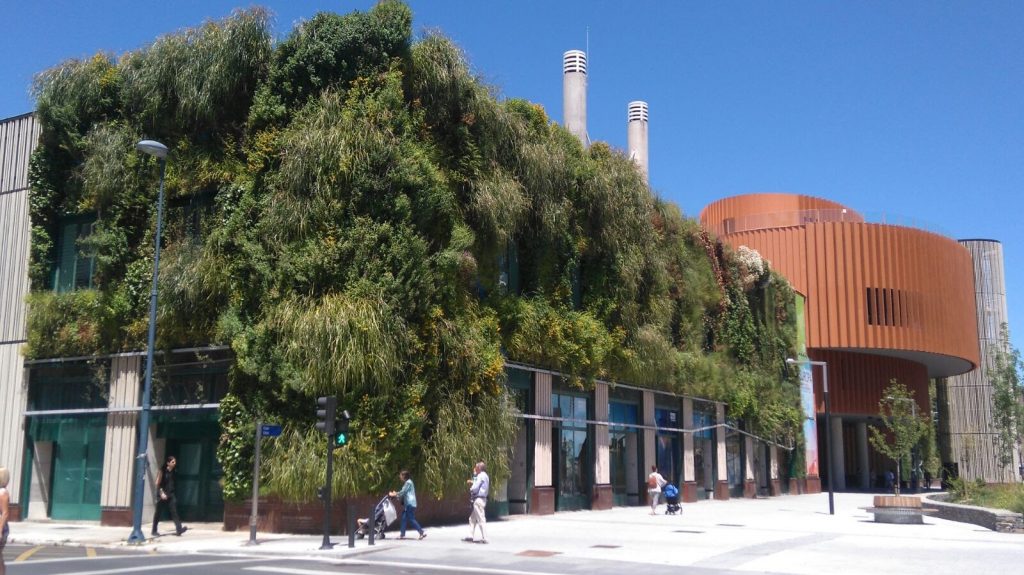
How are these buildings designed?
Integrating vegetation in architecture is not always easy, there are multiple techniques, systems, solutions…
In SingularGreen we have created a series of courses where we tell you about our experience over the years and the different options to carry it out.
If you want to know more about this world, we encourage you to take a look at our course on vertical gardens and green roofs.






